Dear team:
One of my customer reference routines(lin_ex3_sci_dma) configures the Lin module for SCI use. In the example, the multi buffering mode is used and needs to be modified to disable the multi buffering mode. However, after changing to disable multi buffer mode, SCI cannot start DMA. What might be the problem? Here's where he changed the code:
1. Main program definition:
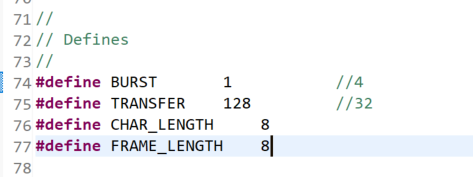
2. Modify the DMA initialization function initdma():


3. Modify the Lin / SCI configuration function configurescimode (void):

4. Operation results:
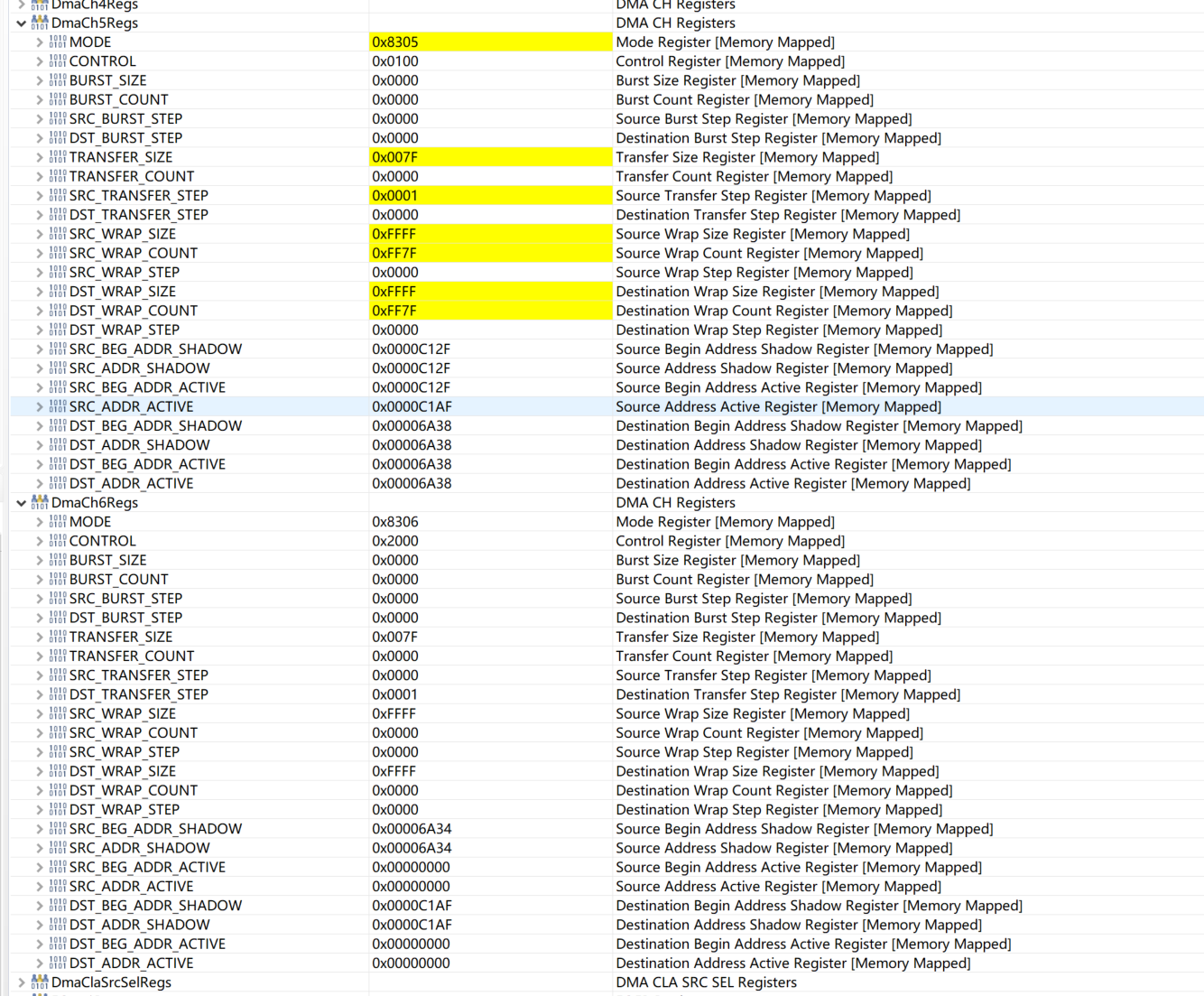

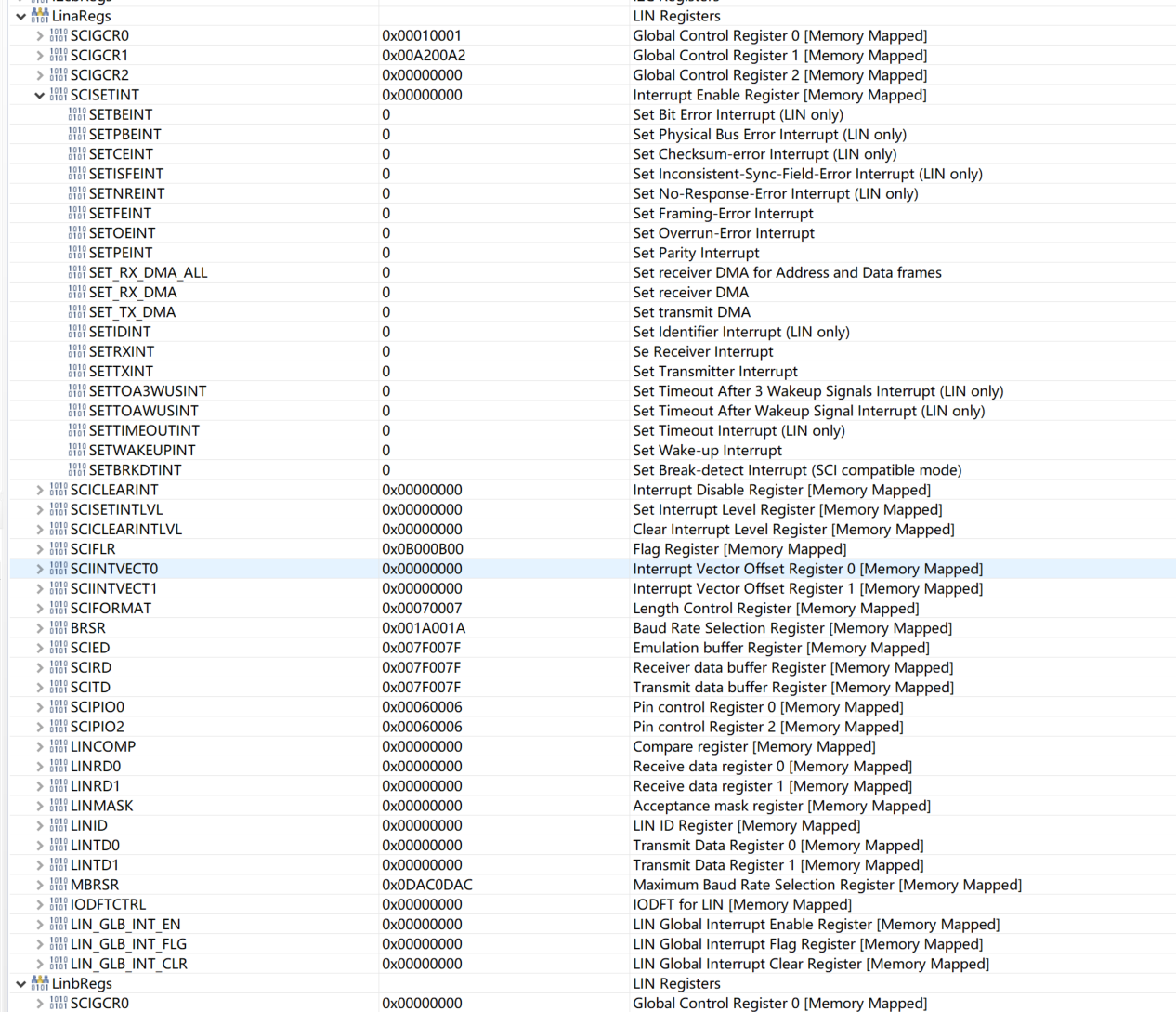
Observing the SCITD and SCIRD of LIN, the data is the same, both are 7FH. Therefore, LIN / SCI works normally. The destination address and source address of DMACH6 are not activated, indicating that DMACH6 has not received RX_DMA signal. Observe SET_RX_DMA and SET_TX_DMA in SCISETINT of LIN, both of them are 0. This part has not been modified, and the original sample program is the same. The running results of the original sample program are attached:
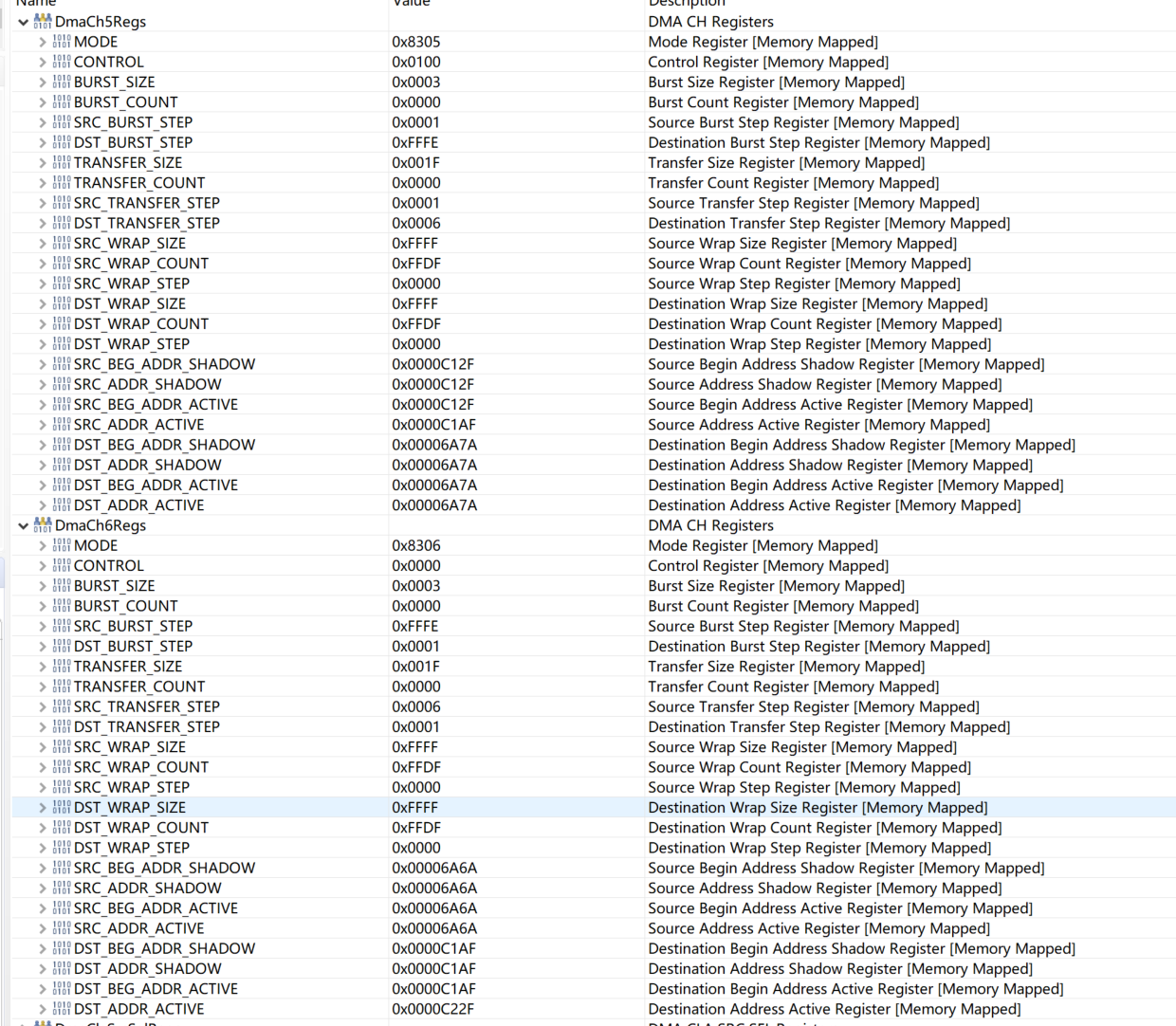
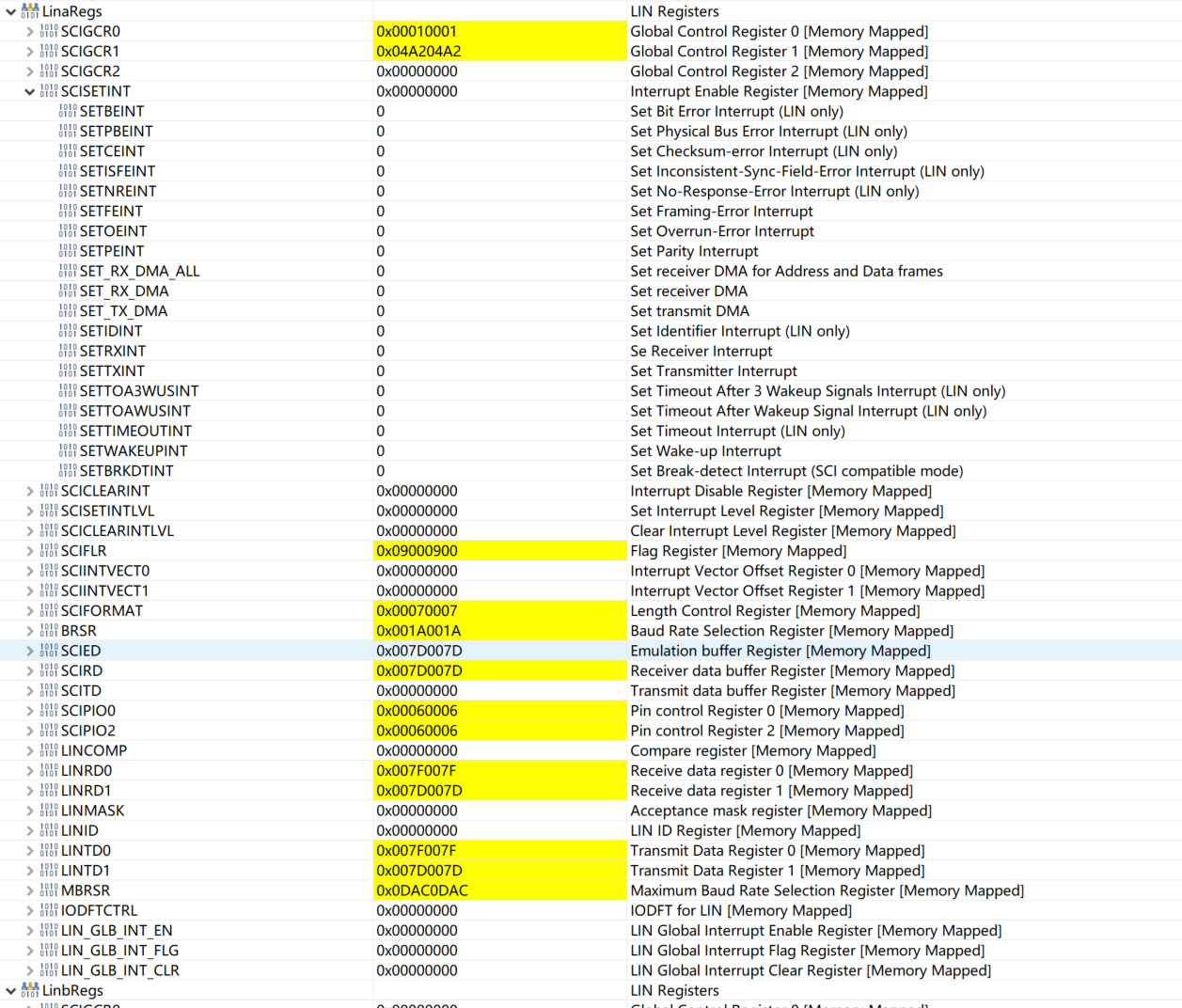
In addition, are there any errors in the technical manual?
The LIN register address given in SPRUIN7 is as follows:

The address defined in driverlib is as follows:

Best regards

